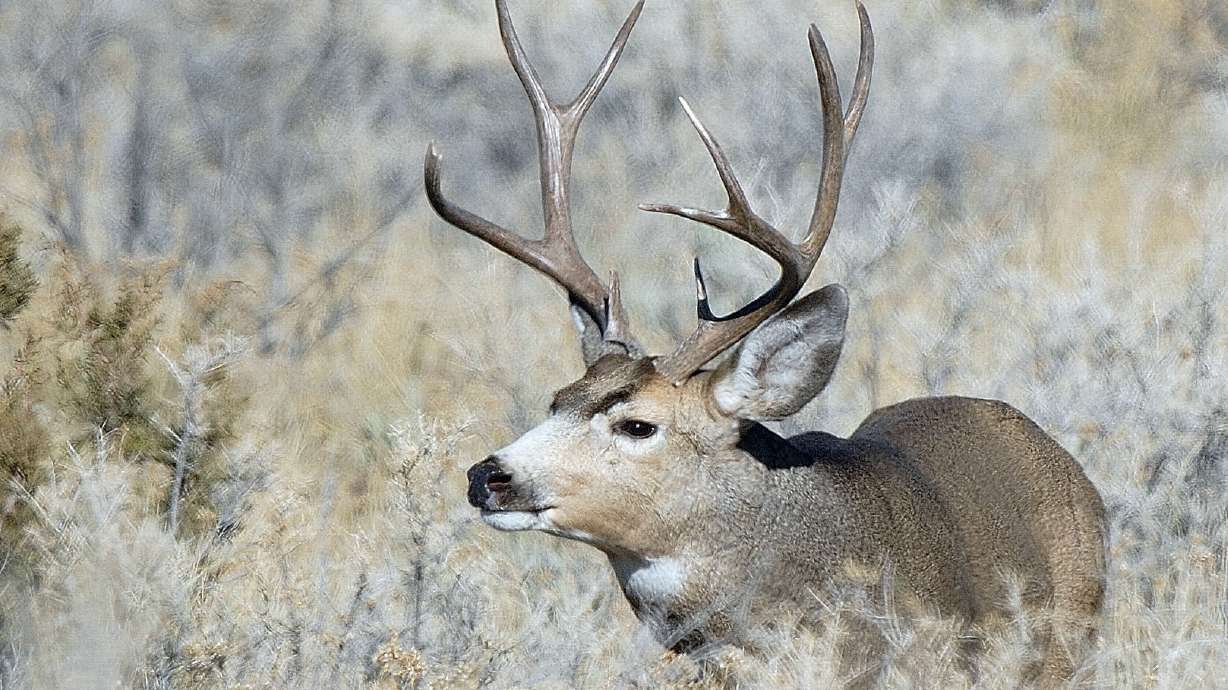Estimated read time: 3-4 minutes
This archived news story is available only for your personal, non-commercial use. Information in the story may be outdated or superseded by additional information. Reading or replaying the story in its archived form does not constitute a republication of the story.
SALT LAKE CITY — Federal land managers on Tuesday announced they are sending $28 million to six conservation groups to improve and conserve public lands across the West, including multiple projects in Utah.
The Bureau of Land Management picked the Salt Lake City-based Mule Deer Foundation, as well as the Backcountry Hunters and Anglers, Diné Native Plants Program, National Fish and Wildlife Foundation, The Nature Conservancy and Trout Unlimited as a part of the program, using funds set aside from the Inflation Reduction Act passed last year.
"These projects ... are made possible by once-in-a-generation funding that will help the BLM restore and protect our shared public lands, wildlife habit and clean water, all for future generations," BLM director Tracy Stone-Manning said in a conference call with reporters Tuesday morning. "It's difficult to overstate the importance of partnerships to our effort to restore our nation's public lands."
Details about exactly how the money will be spent are still being finalized, but Stone-Manning said all of the projects aim to help improve deserts, grasslands, forests and other ecosystems in the West, which will ultimately benefit the region's natural resources, surrounding local communities and recreationists.
Leaders of the Mule Deer Foundation and Trout Unlimited, which are receiving $3.5 million and $8.9 million in funds, respectively, said Tuesday that they are eying projects in Utah with the money coming their way.
Steve Belinda, director of conservation for the Mule Deer Foundation, said the organization is looking at "multiple places" to conduct projects across southern Utah to help mule deer herds in the area, along with projects along the Utah-Idaho border. These would be in coordination with federal, state and tribal organizations, as well as private landowners.
Trout Unlimited CEO Chris Wood adds that the conservation group he oversees is looking to conduct Beaver Dam Analog work in the Brush Creeks area of the Uinta Mountains and Willow Creek, a tributary of the Green River in eastern Utah, as a part of its plan to improve the Upper Colorado River Basin.
In both cases, crews will install wood-like debris to help raise the water table of the creek, which, in turn, improves groundwater capacity, reforests the creek's riparian area, offers late-summer flows and improves wildfire fuel breaks in the area in addition to improvements to habitats for native trout species, Wood explained.
"We'll be ... helping to promote irrigation efficiency for farmers and ranchers and then working on flow augmentation as we see drought becoming more and more pervasive," he said. "Keeping as much water in stream as possible is really vital."
Bureau of Land Management officials said that landscapes in Utah are being considered as a part of the $9.9 million directed to the Nature Conservancy, while the $1.2 million headed to the Diné Native Plants Program will focus on plant restoration projects on Navajo Nation land, including by Bears Ears National Monument.
The funding announced Tuesday tacks onto land conservation projects already announced through the Inflation Reduction Act. For example, the Department of the Interior announced in May that $9.6 million would go toward improvements to the Upper Bear River, out of $161 million worth of project funding.
The 2021 Bipartisan Infrastructure Law and the 2020 Great American Outdoor Act have also generated millions of dollars aimed at improving public lands in recent years. Stone-Manning said all of the recent funding is important because Americans expect the Bureau of Land Management to manage public lands in a way that's "healthy and functioning" for decades to come.
"We agree that that is our deep responsibility," she said. "As such, this work represents a really timely opportunity to have measurable success toward that outcome and we can't wait to get started."










